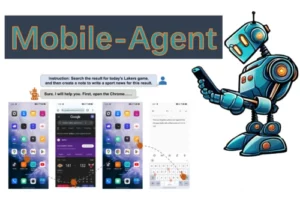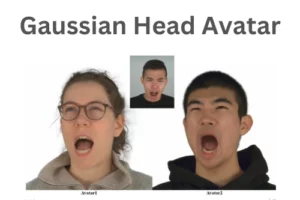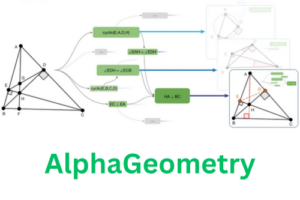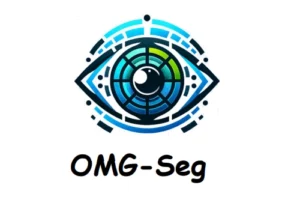Revolutionizing Computers’ Perception of Small Object Detection! An exciting revolution in computer vision is currently taking place with the goal of improving computers’ capacity to recognize and detect minute objects in pictures and movies. It’s difficult for computers to locate something little, like a far-off jet or a tiny aquatic creature. But “Transformers” are altering the rules of the game. Aref Miri Rekavandi and his IEEE team investigate this game-changing technique in this study.
These transformers are distinctive computer vision software programs. They are similar to great detectives when it comes to identifying objects in images. When compared to other methods, such as ones that make use of Convolutional Neural Networks (CNNs), Transformers stood out. They were consistently more successful at detecting items in almost every image or video they evaluated.

The issue is that small objects, like a tiny fish in a vast ocean, are very challenging to find. It could be challenging for even humans to notice these minute features! The purpose of this study is to understand why transformers are so good at locating small items. What distinguishes them specifically for this position intrigues scientists.
Additionally, they are searching for ways to improve the abilities of transformers to locate small items. From 2020 to 2023, they examined more than 60 research publications that included a variety of photographs and films, including ordinary situations, medical images, and even images taken underwater. Additionally, the researchers have compiled a list of 12 large data sets that may assist transformers locate small objects more effectively.
Revolutionizing Small Object Detection in Computer Vision
Prior to this study, computers were rather adept at identifying large objects in images. Computers could detect large vehicles and tall buildings pretty well. Computers, however, had trouble with little things, such as a tiny butterfly in a large field. They frequently overlooked them or reported the wrong place. Because of this, it was difficult for computer systems to perform useful functions like identifying minute medical defects in X-rays or identifying minute details in satellite photos.
The intriguing part is that this discovery has greatly improved how computers locate little objects! The game has transformed because to these unique computer programs called transformers. They are far more adept at locating those tiny items. As a result, in the future, computers may prove to be very useful for tasks like spotting minute features in aerial photographs, spotting minute anomalies in x-rays, or even spotting tiny moving things in surveillance footage. This innovation makes computer vision much more versatile.

We can anticipate increasingly precise and trustworthy computer systems that are excellent at recognizing little details in the upcoming years. From healthcare to environmental monitoring and other areas, this might have a huge effect. Imagine having a computer that can identify a little pipeline leak before it develops into a larger issue or assist medical professionals in identifying minor health issues much sooner. Thanks to the improvements in small object detection brought about by this research, the future appears bright.
Accessing the Research and Its Openness
Platforms like arXiv, where the complete research article is available for anyone interested in digging into the study’s techniques and findings, make this ground-breaking research easily accessible to the general audience. The code, data, and resources utilized in the study are available on GitHub, where the researchers have also published their work in the spirit of openness and collaboration.
This open policy encourages academics, developers, and computer vision enthusiasts to look into, build upon, and adapt the discoveries in order to promote innovation and advancements in small object recognition techniques. Notably, a significant portion of this research is freely available and unconstrained, enabling a sizable audience to benefit from and develop it. Furthermore, it might be possible to find open-source implementations, making it simpler to integrate these cutting-edge small object detection techniques into other tasks and programs.
Potential Applications
The findings of this study have broad implications and intriguing prospective applications in many important sectors. In these research, a variety of detection tasks are performed, including the search for minute objects in normal photographs, high-up aerial photographs, images utilized in healthcare, active millimeter photography, underwater photographs, and even films.
Consider how this discovery might be used in the medical field to assist doctors identify minute details in photos of patients and cure health problems earlier. It can be used in surveillance to keep a careful eye on minute details in real-time, which is essential for security and safety. For instance, detecting minute motions underwater or spotting strange objects in crowded settings like airports could improve security efforts.
Additionally, it has the potential to revolutionize environmental monitoring by seeing minute alterations in the sky, water bodies, and even the landscape, assisting in catastrophe prevention and improved management of natural resources. This study is like a key that unlocks a wide range of applications, making our world safer and more effective. It has the potential to excel in so many different areas.
Transformers Boost Small Object Detection: Datasets and Models
Transformer-based networks were used in this study to advance small object detection using 12 datasets and models. The datasets were essential since they provided a variety of scenarios for study. While MRS-1800 focused on the detection and segmentation of things like airplanes and ships, UAV123 supplied aerial films for tracking objects. SKU-110K caused difficulties due to its varying scales and illumination. For better model training, the BigDetection dataset combined numerous datasets and balanced object sizes. The research landscape was enhanced by new datasets for specialized applications, such as chemical plant operations and UAV-captured photos.

The study investigated numerous models for video-based small item recognition and tracking, boosting spatial and temporal transformer capabilities, including ViDT, TransVOD, and PTSEFormer. While some models, like PointDet++ and DKTNet, included posture information for improved detection, others, including AO2-DETR, GhostNet, and DeepLesion, offered specialized feature representations. In models such Group DETR and DEFA, architecture and block alterations were investigated, and performance was improved by auxiliary methods including data augmentation and pre-training. This thorough method using several datasets and models demonstrated how flexible transformer-based networks are for small item recognition.
Exploring Small Object Detection Methods: Insights and Applications
In this study, they evaluated numerous approaches for locating small objects in diverse applications. Along with the widely used MS COCO dataset, they presented 12 new datasets and examined the outcomes. Overall, across various applications, models integrating both conventional CNN and more recent transformer approaches tended to perform well. When these models used multi-scale learning techniques and were pre-trained on huge datasets, they frequently produced better results. Small item recognition in underwater photographs is still quite difficult, though. They discovered that there is potential for advancement in transformer-based approaches for video-based detection due to their poor performance.
This study examined several techniques for finding small items in a variety of applications, with a special emphasis on the usage of transformer-based methods.
Detection of Small Objects in Aerial Images: The study examined the DOTA dataset to evaluate the effectiveness of transformer-based detectors in this situation, which presents unique hurdles for small item recognition in aerial photos.
Detection of Small Objects in Medical Images: Precision in small object recognition is essential in the crucial field of medical imaging. The study examined transformer-based methods in this field using the DeepLesion CT imaging dataset.
Detection of Small Objects in Underwater Images: It can be difficult to find little items in submerged situations. The study examined the URPC2018 dataset and found areas for development.
Detection of Small Objects in Active Millimeter Wave Images: Techniques for active imaging are essential in security applications. Using the AMMW Dataset, the study evaluated transformer-based strategies and examined their potential.
Detection of Small Objects in Videos: The study focused on the significance of temporal information when investigating small item detection in videos. On the ImageNet VID dataset, the outcomes of transformer-based approaches were studied.
Important Results and Implications
Hybrid Approaches Balanced: The study demonstrated the efficacy of models that combine traditional CNN and transformer approaches and their flexibility to a range of applications.
The difficulties of underwater detection: The study highlighted the need for additional research by identifying ongoing difficulties in small object detection in underwater photos despite progress.
Improvement of Video-Based Detection: There is a research gap in this area as evidenced by the need for improvement in transformer-based small object identification methods.
Choosing the Best Strategy: The study emphasized the value of customizing small item identification methods to particular applications and the effectiveness of pre-training and multi-scale learning methods.

Unlocking the Potential of Small Object Detection
This survey report carefully reviewed more than 60 research papers on using transformers for small object identification. They divided these methods into seven viewpoints, illuminating each one’s particular advantages and uses. They also thoroughly compared the CNN-based and transformer-based techniques, showing the differences between them. They also presented benchmark datasets for different vision applications and thoroughly discussed 12 datasets pertinent to small object detection. Future studies should focus on the unique difficulties presented by small object detection in a variety of fields, including medical imaging and undersea analysis. To increase the efficacy of transformer models, different approaches should be investigated rather than scaling them up.

Conclusion
The science of computer vision is experiencing a revolution in the recognition of small objects thanks to Transformers. These specialized algorithms outperform more traditional methods like Convolutional Neural Networks (CNNs) at detecting minute details in images and movies. This comprehensive study, which spans more than 60 investigations from 2020 to 2023, introduces 12 significant datasets and covers a range of applications, from surveillance to healthcare. Embracing openness on services like GitHub and arXiv promotes collaboration. The management of environmental resources, security, and diagnostics should all be enhanced by this innovation. Addressing the unique challenges of small item identification will be a top focus in order to leverage the transformative potential of transformers, giving innovative solutions priority above straightforward model scalability.
References
https://github.com/arekavandi/Transformer-SOD
https://arxiv.org/pdf/2309.04902v1.pdf
Similar Posts
-
Chinese Company DeepSeek Releases DeepSeek-Coder a LLM for Code Generation

-
Alibaba’s Mobile-Agent: A Smart Mobile Assistant

-
Grounded SAM: A Unified Model for Diverse Visual Tasks

-
Gaussian Head Avatar: High Quality Head Avatar Generator

-
Google DeepMind’s AlphaGeometry: Without Assistance Solving Olympiad Geometry Problems

-
OMG-Seg: A Unified Segmentation Model

